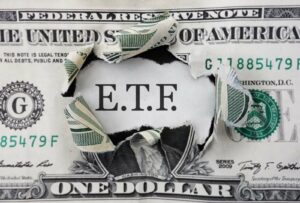
Rep. Phil Roe (R-TN) has been under scrutiny for stock trades in a number of Corona-related stocks (Gilead, Amgen, Sanofi, Humana, among others), after receiving a Congressional briefing in March.
We first publicly noted Roe’s trades on April 24, and marked them as noteworthy in our database because, despite being a very active trader, many of these stocks were new to Roe’s trading history. As regards the ongoing debate, we have this to add:
Roe’s disclosures indicate that he was responsible for the trades in question.
Roe, however, argues that coverage of the trades amounts to “character assassination” and has called The Tennessean’s coverage of his trades “an untruthful hit piece”.
We disagree, because many of his problematic trades are labeled as “UNSOLICITED” – which is brokerspeak for “the legal owner of this account called us (on the phone) and instructed us to make these trades.”

When we look at all of Roe’s transaction disclosures, the trades appear to be copy-and-pasted from another electronic system. Keep in mind that Roe is a VERY ACTIVE trader, almost certainly in the top 5% among Members of Congress. So we’ve seen a lot of his disclosures. Unlike the majority of his colleagues, Roe’s disclosures are not submitted in a machine-readable format. That’s why we noticed that the data appears to have been copy-and-pasted from another electronic system into a PDF form-filler, and then printed out and scanned in.
The inverted + symbols in the bottom-right corner of each entry box are the give-away.

What we suspect is that either Roe’s broker assists his office in filling out the form using their daily trade blotter (the system brokers use for tracking trades), or that Roe’s office uses his electronic client portal or statements to copy and paste into a electronic version of the disclosure form. What’s key is that the phrase “UNSOLICITED” is a broker-centric term.
In the past, most stock brokers made their money on commission. They called clients and SOLICITED stock trades from them by pitching ideas. Think Boiler Room. These trades must be separated from trades the client’s makes on their own volition for both regulatory and commission-tracking purposes. Client-initiated trades are flagged “UNSOLICITED”.
Roe’s trades are appended with “UNSOLICITED”. (See infographic)
In recent years, the financial advice / brokerage industry has moved away from commissions. Typically in the modern system, advisors charge a percentage of the total value of the account as their fee and do not charge a commission on transactions. In these more-modern systems, the broker can get “discretion” over the client’s account and initiate trades without first consulting the client, in accordance with the broker’s own outlook on the markets. Trades of that nature are flagged as “PER ADVISORY AGREEMENT”, which is another term appended to many of Roe’s trades.
According to Roe’s disclosures, the trades in question were “UNSOLICITED” and thus had to be initiated by the legal owner of the account. According to Roe, the trades were initiated by the financial advisor – which begs the question, how did they come to be flagged as “UNSOLICITED”?
Fortunately, for Roe, there might be a very easy way clear his name. Roe notes that he’s had the same financial advisor for 30 years. That means his accounts go back to a time before discretionary and fee-based trading were popular. Assuming he wasn’t just throwing his advisor under the bus, Roe should be able to point to the specific agreement giving his advisor discretion over the accounts and the ability to initiate trades on Roe’s behalf.
On the other hand, if the powers-that-be suspect criminal activity, the account structure is moot. When each individual trade is entered, the broker must note whether the trade was SOLICITED or UNSOLICITED and under what legal authority the trade was conducted. For each trade executed without discretion, notes from the relevant phone call attached for regulatory compliance. That happens for both SOLICITED and UNSOLICITED trades. Those records not only exist, they would take less than a minute to retrieve. (after all, these systems are used to track brokerage commissions.)
As an aside, we have not discussed online trading but the same systems, audit trails, and protocols exist there. Moreover, brokers cannot accept trade instructions over voicemail or email, although clients can execute trades for themselves online. In any case, a clear trail of who initiated each trade and records of the relevant conversation or online session certainly exist and are easy to retrieve.
If untrue, Roe could easily rebut the media’s claims with primary account documentation.





